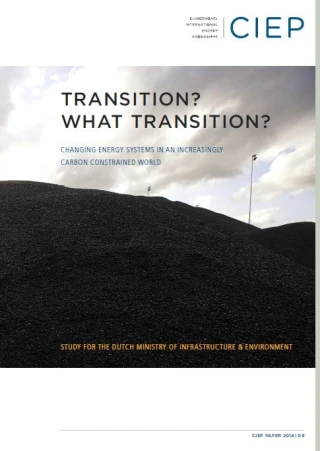
Transition? What Transition?
- Publication:
- CIEP, December 2014
Transition? What Transition? Changing Energy Systems in an Increasingly Carbon Constrained World is a study for the Dutch Ministry of Infrastructure & Environment by researchers of CIEP/Duisenberg School of Finance/Tilburg University and EDHEC.
Energy transitions have been taking place continuously since the Industrial Revolution. These transitions primarily involve national energy mixes. In general, countries keep moving up the energy ladder, meaning that they integrate larger and larger proportions of specialized fuels into their energy mixes for dedicated types of energy demand (heat, cooling, electricity, mobility). These fuels often emit less carbon per unit of energy consumed and, due to technological developments, create more economic efficiency and convenience for consumers. The availability of domestic sources plays an important role in the composition of a national energy mix, and the ability to transport and trade energy is crucial in matching demand and supply.
This report shows some of the history of how the nature of these transitions has changed over time.
The emphasis on transitions lays out a different way of thinking about the approaches to the phenomenon known as the ‘carbon bubble’ or the potential of future stranded assets and value loss in the fossil energy industries as a result of climate change policies. A core message is that the role of coal without CCS, as the largest source of future CO2 emissions, would need to be addressed first. Such a policy focus would allow space for fuels with a higher energy output per unit of carbon emission to stay in the mix for a longer period of time...Â
Â
Â
Â





